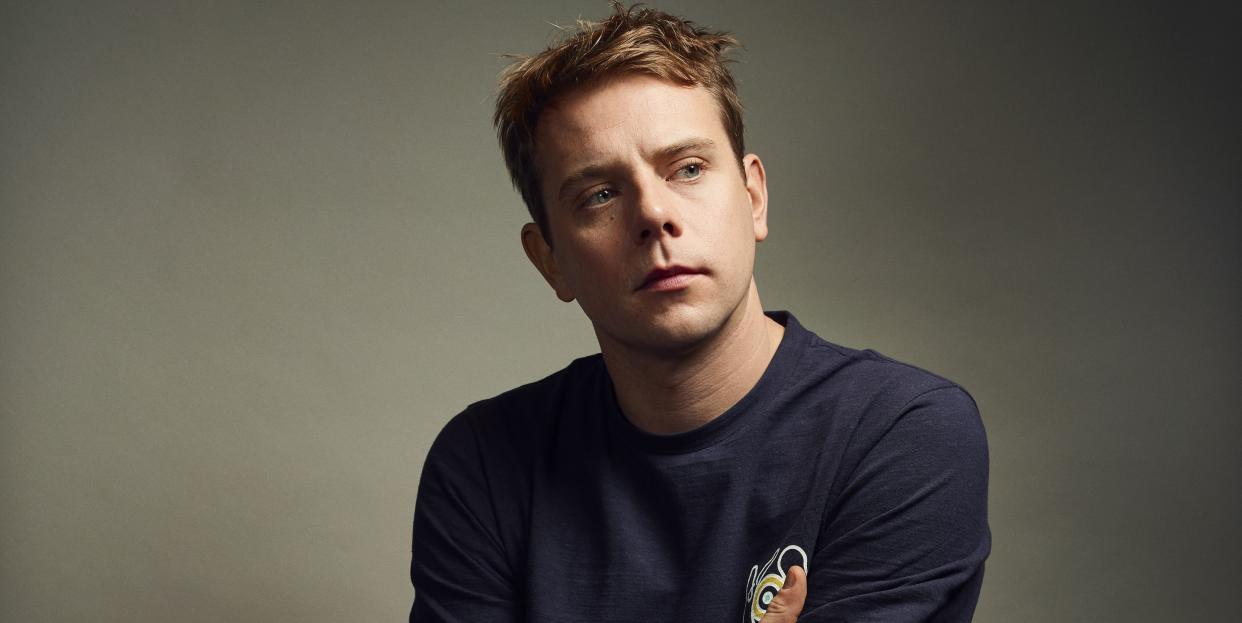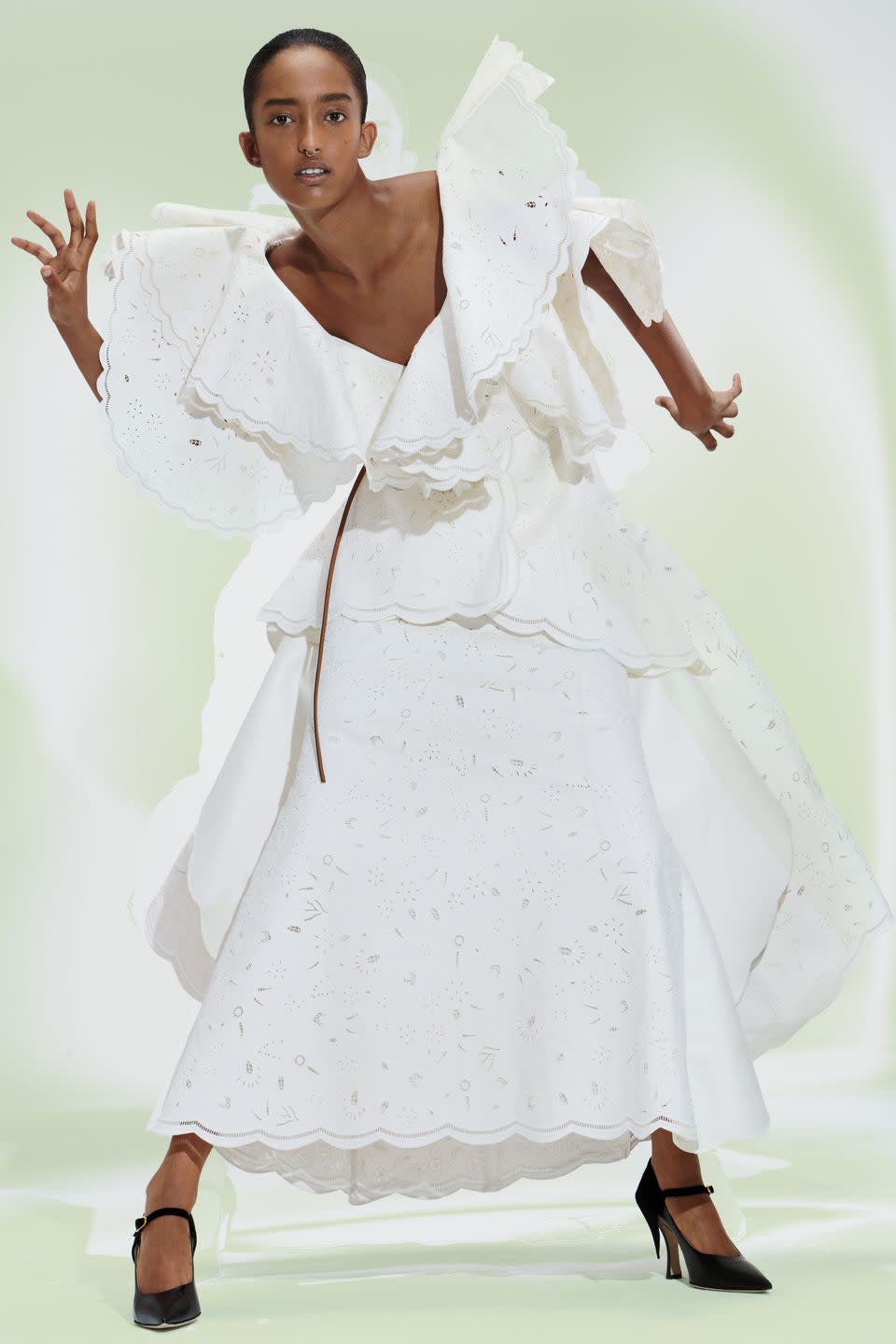JW Anderson on creativity and social conscientiousness in a crisis

"I like parameters; I like to be forced into things," Jonathan Anderson says. The day I speak to the 36-year-old designer, we’re between lockdowns; cases of the new strain of Covid-19 are rocketing in Britain and travel from Europe is soon to be banned, so parameters are very much on our minds.
The idea of being boxed-in feels as though it ought to be anathema to Anderson, whose off-kilter originality has been a revelation for the fashion world since he launched his eponymous label in 2008. Appointed the creative director of the Spanish luxury fashion house Loewe five years later, all the while continuing at the helm of his own line, he has consistently stretched the convention of the fashion canon, putting craft at the forefront of Loewe’s ethos and drawing on its heritage as an artisanal leather-goods workshop.

Yet the inevitable constraints of the pandemic have seen his creativity rise to new heights. Last September, when it was obvious that Fashion Month would have to be completely rethought, he put out his groundbreaking spring/summer 2021 collection for Loewe. The presentation was an expression of optimism: those who would have attended instead received a box containing glue, scissors and life-size prints of 17 looks – joyful silhouettes of ballooning sleeves, trousers and shoulders, shapes that seemed to require a new vocabulary to describe them, hoops and broderie anglaise dresses that recalled Spanish and Dutch Old masters – so they could be appreciated up close. "I had this fantastic idea of people getting the box and covering a book or doing up their bathroom," he said at the time. The result was a triumph of collaboration, with special-edition wallpaper created to encourage participants to cut and paste at will, designed by Anthea Hamilton who joined fellow artists Jadé Fadojutimi and Hilary Lloyd in modelling for the lookbook. The result was utterly contemporary, fresh and distinct, threaded through with myriad ideas that appeared to break out of the context in which they were conceived. "We have to believe in the idea of fashion!" he says. "It cannot just be a shift dress every day."

Anderson is talking to me from his Paris atelier, having just emerged from an intense period photographing Loewe’s latest menswear collections. Although he looks harried – hair dishevelled, clothed in a simple navy pullover – it’s clear that he is thriving. Before the pandemic, he’d been travelling between Paris and east London every week to work on each brand, spending two days at Loewe and three at JW Anderson, but now has a less high-octane schedule due to the necessary restrictions. "It’s taken me a long time to adjust to a new rhythm," he says. "I’ve realised I’m more compulsive than I thought. I enjoy speed more than I thought. But I’ve enjoyed going into a kind of crisis mode."
While he is mindful of "navigating something that has not happened in my lifetime", Anderson is no stranger to experiencing a fracturing of society. Growing up in Northern Ireland during the early 1990s meant that he saw how fragile the status quo could be. "I’ve seen entire streets blown up. The Troubles were at a fever pitch before the Good Friday Agreement," he says. "It teaches you that you cannot take anything for granted, and big things can disappear in minutes. But the most amazing thing about society is that we are able to move on. Society is very good at rebuilding itself quickly. The Nineties were not that long ago."

In the first month of lockdown in March, Anderson turned to the past to make sense of what was happening, educating himself on the flu pandemic of 1918 to understand its effects on society and the creative output. Then, he went back further, reading lots of Oscar Wilde, fascinated by his rather modern ability to create concise messaging with gravitas (Wilde’s quote: "The secret of life is in art" was the mantra of a recent JW Anderson capsule collection). He also became "obsessed" by Capability Brown, the society gardener responsible for the grounds of Belvoir, Blenheim and Highclere castles. "I was looking at the idea of working with nature, but saw that ultimately, it was about man controlling it. When you look at Capability Brown, his gardens never really realised [their potential] in his time period. They took until today to make sense."
Perhaps, I say, a landscaped garden, in which man tames the wildness of nature could be a metaphor for how we have to manage the pandemic. "Exactly," he agrees. "It’s also about planting seeds. That’s the idea of the garden, it’s about something that might not be realised in your lifetime. You cannot be selfish with that." What, I wonder, is he planting? He cites the Loewe Craft Prize, which he set up five years ago to celebrate contemporary makers including the lacquer artist Genta Ishizuka, and Eye/Loewe/Nature, a separate line of fashion made from upcycled materials, that aims to help fight plastic pollution.
"[For me], it’s not about the top-line press release, it’s about the 'garden', the long-term project. I don’t need to tell you we’re going carbon-neutral tomorrow, I am over the bullshit PR spiel," he says vehemently. "It’s about putting actual, real things in place. It’s an obligation. Obligated. Have to," he continues with emphasis. "There’s no choice on race, there is no choice on the environment, there is no choice on unemployment. These are major, major, major problems. As a society we should not allow them."
There is, he thinks, a reckoning coming, and the fashion industry should be building from the ground up. "The greatest thing I’ve learnt this year is that fashion is a very small cog." He worries that it will be seen as irrelevant if it doesn’t connect with reality. "We should be dealing with nostalgia, sorrow, social issues. I reject detached fashion – how can you go through a pandemic and turn a blind eye to it? We have to make sure we move with the arts as a group. The rebound can be bigger for retail, but with government-funded institutions, it could take 10 years. Fashion needs to be careful it doesn’t become arrogant. Where would we be without ballet, or opera, or museums that are now on their knees? Without the V&A, who is going to store the history of fashion?’
Art is a passion: he has staged fashion shows in Kettle’s Yard in Cambridge, as well as curating his own exhibition ‘Disobedient Bodies’ at the Hepworth Wakefield in 2017, featuring sculptors like his friend the ceramicist Magdalene Odundo. Last November, he launched a capsule collection inspired by the pioneering Californian artist Ken Price, whom he cites as "one of the most important ceramicists of the 20th century". "It’s about sticking to your guns. Trying to enrich things. Investment in people, investment in the environment. They cannot be short-term goals," he says. "In fashion, it can get incredibly emotional, but at the same time, you can forget the actual solutions."
Transience and longevity, wit and reflection – there is a tension and even dichotomy within Anderson’s world view. He sees JW Anderson, with its one permanent space in Soho, as a cultural agitator, while Loewe, with its 175-year history, is its preserver. The house hosts annual exhibitions at Milan’s Salone del Mobile and Miami’s Art Basel, while Casa Loewe on New Bond Street will just as likely showcase Anthea Hamilton’s glass table as the new collection. "My pitch, when I started was 'how do you build a cultural brand?'" he says. When he first conceived Loewe’s elegant Puzzle bag, a jigsaw of geometric shapes in leather, there was said to be internal opposition to the design. Now it’s a Loewe bestseller, seen on the arms of Beyoncé and Julianne Moore, and currently immortalised in the Bags exhibition at the V&A, where he is a trustee.
Other modern classics including the Hammock, Barcelona and Gate bags have followed: a timeline of greatest hits. Yet, there is an audacity to what he does; Anderson doesn’t subscribe to the idea of trends. "I don’t like to conform. The minute I feel things are getting too closed, I have to break through. I find popularity unrealistic and distasteful, because things cannot be successful overnight. That is hype. Every time you build a landmark, you have to be able to destroy it. Karl Lagerfeld was probably the best example of doing that, and never looking back." But surely, given its iconic status, he won’t destroy the Puzzle? "I feel I haven’t perfected it. It has evolved over the last seven years, it has become better made, more functional. We still, to this day, refine our bags. We’re trying to make sure we’re not a one-hit wonder. The quicker you go up, the quicker you go down. That’s how it works."

For Anderson, "fashion should be about individualism." He does not believe in clothes specifically for men or women, and when I ask what he thinks about the forthcoming gender-neutral London Fashion Week, he is doubtful. "I have mixed thoughts," he says. "Gender-neutral is not a trend, it’s a reality." Does he think Loewe will ever stop selling separate men’s and women’s collections? "I do, and I don’t…" he says thoughtfully. "My whole philosophy is that you cannot tell people what to wear. You’re not allowed to say: I want this to be bought by a woman or by a man'." He found it exciting when he first discovered that women had been buying menswear at JW Anderson, and vice versa. "But if I had told them to do that, they would not have done, because it removes the idea of the individual."
That’s the attraction of Anderson’s vision: the full appreciation of the individual seen through the lens of his continual cultural curiosity. Its manifestation will always be relevant, no matter what parameters we find ourselves existing within. "I think fashion can sometimes have meaning to it, but ultimately, the meaning is brought about by the people who wear it."
In need of some at-home inspiration? Sign up to our free weekly newsletter for skincare and self-care, the latest cultural hits to read and download, and the little luxuries that make staying in so much more satisfying.
Plus, sign up here to get Harper’s Bazaar magazine delivered straight to your door.
You Might Also Like


